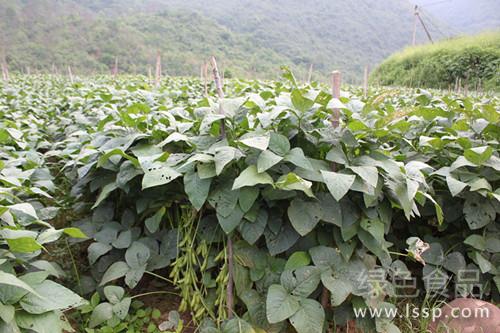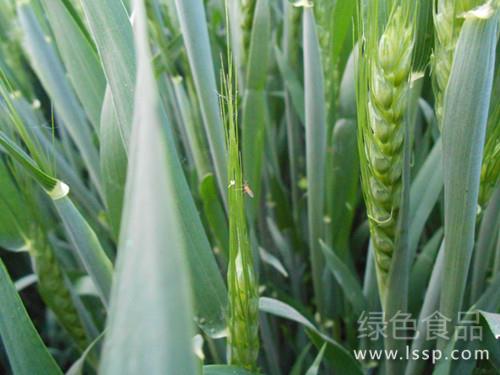Less pods and less seeds affect the yield of edamame bean in early spring

Edamame bean
1. the reasons for the less pods and seeds in the pods of edamame beans:
1. The temperature is low. The suitable temperature for the growth period of edamame bean is 15-25 ℃, and the optimum temperature for flower bud differentiation is about 20 ℃. After flower bud differentiation, if the temperature is lower than 15 ℃, the growth and development of edamame bean will be hindered, thus affecting the fertilization and fruiting of edamame bean. The optimum temperature at flowering stage is 24-29 ℃ per day and 18-24 ℃ at night, in which night temperature is the most important. For example, if the night temperature is lower than 15 ℃, it can not blossom even if the day temperature is higher. As the temperature is prone to sudden changes in spring, protective work should be done well. If it is affected by low temperature in flower bud differentiation stage and flowering and podding stage, there will be less pods and seeds.
2. Malnutrition. Edamame has rhizobium that can fix nitrogen in the air to provide its own nutrition and can increase the amount of nitrogen in the soil. The initial flowering stage is the peak period of nitrogen uptake of edamame bean. The early maturing edamame bean varieties planted at low temperature in early spring are not easy to reproduce due to low temperature, resulting in insufficient nitrogen fertilizer, which can easily lead to poor growth and serious shedding of flowers and pods. The growth of edamame bean also needs a large amount of phosphate fertilizer, and the application of phosphate fertilizer is effective to increase the yield of edamame bean. If phosphorus is deficient in the branching stage, the number of nodes and branches will be reduced, and the number of nodes and flowers will be reduced in the flowering stage, and the shedding of flowers and pods will be serious. In addition, the number of root nodules of phosphorus-deficient edamame bean will also be reduced, the activity of rhizobia will be weakened, and the nitrogen fixation will be less.
3. The soil is dry. The flowering and pod filling stage is the period when the edamame bean grows most vigorously and needs the most water, and the soil water content is required to be kept at 60-70% of the maximum water holding capacity in the field. When the soil is dry, it will hinder the absorption of carbon dioxide by edamame beans and hinder photosynthesis. The early flowering stage was affected by drought, the vegetative growth was affected, the number of flowering pods decreased, and the flowers and pods fell off; from pod setting to seed filling stage, the transport of nutrients was blocked, and the ovule could not get the necessary nutrition for development, which would cause young pods to fall off and blighted seeds and pods.
2. Preventive measures:
1. Cultivation in protected area. When planting early maturing edamame beans in early spring, double film protection measures such as greenhouse and small arch greenhouse can be adopted to sow seeds when the soil temperature is stable over 12 ℃ from the middle of February to the beginning of March. In the whole growth period of precocious edamame, the film should be exposed and ventilated in time according to the temperature needed in each growth stage. Reasonable close planting can increase the number of pods, promote grain fullness and increase yield. In general, about 20,000 basic seedlings should be guaranteed per mu, with a row spacing of 22 cm × 22 cm.
2. increase the application of fertilizer. Mainly based on base fertilizer, supplemented by topdressing. The amount of base fertilizer depends on soil fertility. Generally, 1000-1500 kg of mature compost, 30 kg of high-quality compound fertilizer and 100-150kg of plant ash are applied per mu. During the growth period, the growth of edamame beans can be seen and then fertilized at the right time. 10% rotten human feces and urine can be applied once at the seedling stage, and if the growth is poor before flowering, 10-20% rotten human feces and urine can be applied again, and 0.3-0.5% urea can also be applied. In the early flowering stage, 0.02-0.05% ammonium molybdate solution is sprayed on the leaves, with 25 kg per mu.
3. Rational irrigation. Soya bean blossom and pod filling period, such as dry weather, to "frequent irrigation" as the principle, generally irrigated 2-3 times.
Related
- Fuxing push coffee new agricultural production and marketing class: lack of small-scale processing plants
- Jujube rice field leisure farm deep ploughing Yilan for five years to create a space for organic food and play
- Nongyu Farm-A trial of organic papaya for brave women with advanced technology
- Four points for attention in the prevention and control of diseases and insect pests of edible fungi
- How to add nutrient solution to Edible Fungi
- Is there any good way to control edible fungus mites?
- Open Inoculation Technology of Edible Fungi
- Is there any clever way to use fertilizer for edible fungus in winter?
- What agents are used to kill the pathogens of edible fungi in the mushroom shed?
- Rapid drying of Edible Fungi



